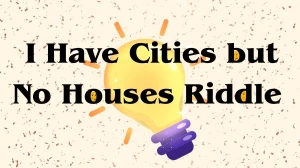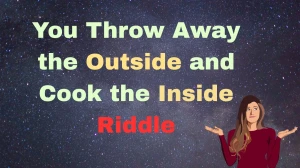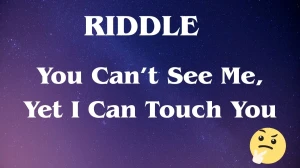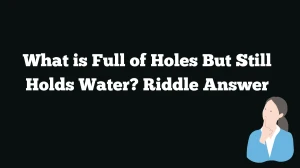You Go at Red and Stop at Green What am I? Riddle
Riddles are a great way to tickle the brain and have a little fun with words. There are many riddles online that engage users with fun and interesting challenges.
Riddles help improve our IQ and critical thinking skills. Today, we’ve brought you an interesting one: 'You go at red and stop at green. What am I?'"
At first glance, this riddle seems to flip logic on its head. We all know that on traffic lights, red means stop and green means go. So what could possibly go at red and stop at green?
Let’s break it down!
A Riddle That Defies the Rules
At first glance, this riddle might make you think of traffic lights. Red means stop, and green means go, right? But here’s the twist: the riddle says you go at red and stop at green—exactly the opposite of what we’re taught.
This reversal is the key to unlocking the puzzle. It’s not about cars or roads; it’s about something else entirely. So, what fits this quirky pattern?
You Go at Red and Stop at Green What am I? Riddle Answer Revealed: A Watermelon!
The answer to the riddle "You go at red and stop at green, what am I?" is a Watermelon.

Confused? Let’s break it down. When you’re eating a watermelon, you "go" at the red part—the juicy, delicious flesh—and "stop" at the green part—the inedible rind. It’s a playful take on eating, where "go" and "stop" refer to your actions with the fruit, not a traffic system. Clever, right?
Why Watermelon Makes Perfect Sense?
Think about it: a watermelon’s colors match the riddle perfectly. The red (or sometimes pinkish-red) interior is the part you dig into with enthusiasm, while the green outer layer signals it’s time to put down your spoon or spit out the rind.
Unlike traffic lights, where red and green dictate movement, this riddle uses the colors as a metaphor for consumption. It’s a brilliant twist that keeps you guessing until the "aha!" moment hits.
Could It Be Something Else?
Let’s explore other possibilities. Could it be a strawberry? No—strawberries are red inside, but their green is the tiny leaves you might remove, not a stopping point.
What about the traffic light itself? Nope, that’s the opposite of the riddle’s logic. The watermelon stands out because it’s a single object with a clear red-to-green transition tied to an everyday action—eating. It’s simple yet sneaky!
The Beauty of a Good Riddle
What makes this riddle so engaging is how it subverts expectations. We’re conditioned to associate red and green with driving, but this puzzle pulls us into the world of food instead.
It’s a reminder that riddles often hide their answers in plain sight, using wordplay and misdirection to keep us on our toes. Next time you slice into a watermelon, you might just smile at this little brain teaser.






